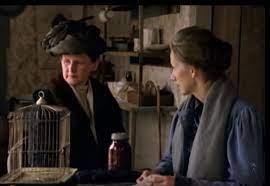 “A Jury of Her Peers,” an iconic piece of literature by Susan Glaspell, provides a profound exploration of gender inequalities, sexism, and the subjugation of women that permeated society in the early 20th century. This article delves into the summary, themes, and critical analysis of this seminal work.
“A Jury of Her Peers,” an iconic piece of literature by Susan Glaspell, provides a profound exploration of gender inequalities, sexism, and the subjugation of women that permeated society in the early 20th century. This article delves into the summary, themes, and critical analysis of this seminal work.
The Author: Susan Glaspell
Born and raised in Iowa, Susan Glaspell was a prominent playwright renowned for her work in challenging the status quo. Although her short stories were often overshadowed by her plays, Glaspell’s work in both realms was instrumental in highlighting the gender disparities of her time.
The Genesis of “A Jury of Her Peers”
The story of “A Jury of Her Peers” originated from Glaspell’s one-act play, “Trifles,” first performed in 1916. In 1917, Glaspell reworked the narrative into the form of a short story, a transformation that allowed her to delve deeper into the characters’ inner thoughts and motivations.
Setting of the Story
The narrative unfolds in the rural heartland of America, specifically in the fictional Dickson County. The tale revolves around a single day in the life of Martha Hale, a day that is far from ordinary due to the brutal murder that has taken place.
A Jury of Her Peers Summary
The story begins on a cold, blustery day as Martha Hale is abruptly summoned to accompany her husband, the sheriff, and his wife to the home of Minnie Wright, a woman accused of murdering her husband, John Wright. The investigation that ensues forms the crux of the narrative.
The plot of “A Jury of Her Peers” is a gripping tale of murder, investigation, and the subtle workings of human psychology. Despite the gravity of the situation, the male characters’ inability to comprehend the evidence contrasts starkly with the intuitive understanding of the women, who manage to piece together the motive behind the crime.
The Characters: A Closer Look
Martha Hale
Martha Hale, the protagonist, is a strong, independent woman whose keen observation skills and empathetic nature allow her to see the truth that the men cannot. Her guilt for not visiting Minnie Foster, her friend of twenty years, forms a significant part of her characterization.
Minnie Wright
Minnie Wright, the enigmatic character at the story’s center, never appears directly in the narrative. However, her presence is profoundly felt throughout the story, as the other characters attempt to unravel the mystery surrounding her.
Lewis Hale and the Sheriff
Martha’s husband, Lewis Hale, and the sheriff represent the male perspective in the narrative. Their inability to comprehend the evidence found at the crime scene forms a stark contrast to the intuitive understanding of the female characters.
The Investigation
The investigation is a critical element of the narrative. Despite being a murder investigation, the men’s inability to find any substantial evidence adds an ironic twist to the story. On the other hand, the women, through their understanding of Minnie’s life and their attention to minor details, manage to piece together the motive behind the murder.
The Evidence: The Dead Bird
The discovery of a dead bird with a broken neck inside a pretty box provides the breakthrough in the case. The bird’s death, seemingly at the hands of John Wright, provides a chilling insight into Minnie’s life and the motive for her husband’s murder.
The Crime Scene: Disarray and Desolation
The state of Minnie’s home adds a layer of depth to the narrative. The contrast between the tidy and untidy parts of the house reflects Minnie’s mental state, providing valuable clues to the women in understanding the circumstances leading up to the murder.
The Quilt: A Symbol of Minnie’s Life
The quilt found in Minnie’s sewing basket serves as a potent symbol of her life. The erratic stitching in one of the patches, starkly different from the rest, mirrors the turmoil in Minnie’s life, leading to the tragic climax.
The Verdict: Law Vs. Justice
While the men in the story uphold the law, the women strive for justice. The women, understanding the suffering Minnie endured, choose to hide the evidence, demonstrating their belief that Minnie’s actions, though illegal, were justified.
The Themes: An Exploration
“A Jury of Her Peers” delves into several themes, the most prominent being gender inequality, sexism, and the concept of justice. Glaspell skillfully uses the narrative to highlight the stark divide between the public and private spheres of life, and how societal norms and expectations can shape and influence a person’s actions.
An Impactful Narrative
“A Jury of Her Peers” is a powerful narrative that provides a profound exploration of societal norms, gender inequality, and the concept of justice. It continues to resonate with readers today, serving as a potent reminder of the struggles women face in a patriarchal society.